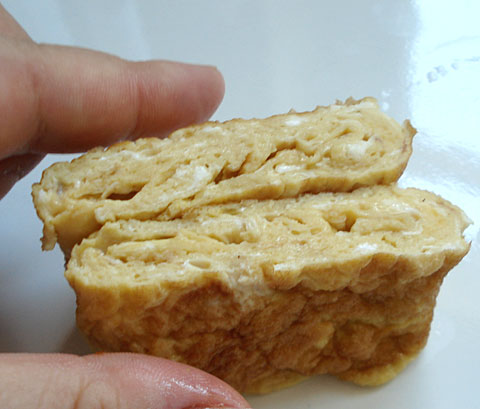
Tamagoyaki, the slightly sweet rolled Japanese omelette, is a standby protein item for bentos. It tastes great at room temperature, is fairly easy to make (once you've done it a few times), and is cheap too. Plus the cheery yellow color brightens up any bento box.
There is one drawback with tamagoyaki: unless you have a tiny tamagoyaki pan (which is a single-purpose piece of kitchen equipment, something I try to avoid stocking in my not-so-large kitchen), you need to make it with a least 2, preferably 3 or more, eggs, to produce the distinctive multilayers of egg. This is fine if you're making bentos for two or more people, but when you're making bento for one you may not necessarily want to eat 2 eggs at a time. And tamagoyaki held in the fridge for more than a day never tastes as nice.
This method of making a 1-egg tamagoyaki in a normal small frying pan was in a recent issue of Kyou no ryouri (Today's Cooking), my favorite Japanese food magazine. I've tried it out a few times now, and I'm totally sold on it. It does make a slightly flatter tamagoyaki than a multi-egg one, but it still has those nice layers.
Here's how to make it step by step.